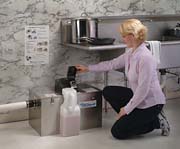
The subject of hazardous wastewater pre-treatment is a large and complicated one. The technology for the treatment and disposal of this waste is the most rapidly developing area for environmental engineering. The management of hazardous wastewater is strictly regulated. Because of this, it is strongly recommended that a firm that is familiar with the published rules and regulations of the Resource Conservation and Recovery Act (RCRA), the Environmental Protection Agency (EPA) and all local and state codes be engaged. The EPA has various definitions of waste that will assist you in determining the level of treatment required for a particular facility. Liquid waste is defined as "a combination of the liquid and water-carried waste from residences, commercial buildings, industrial plants and institutions."
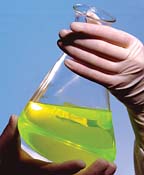
Domestic wastewater is the spent water originating from all aspects of human and sanitary usage that principally originates from residences and is commonly known as sanitary sewage. Also included are non-toxic wastes from commercial buildings, industrial plants and institutions. As such, the characterization of all domestic wastewater involves an examination of its composition and flow characteristics.
The composition of domestic wastewater refers to the actual quantities of physical, chemical and biological constituents. The water supplied to a community will typically contain mineral and organic matter, to which feces, urine, paper and waste from water softeners and other substances are added.
The biological constituents found in domestic wastewater are extremely important due to the public health considerations involved, which stem from the source and nature of the microorganisms present. In addition to the microorganisms that enter the domestic wastewater at its source, they can come from the soil by infiltration. Thus, it is possible to find almost every type of microorganism in sewage.
Bacteria play a fundamental role in the decomposition and stabilization of organic matter, both in nature and in wastewater treatment plants. Of all the pathogenic organisms found in domestic wastewater, bacteria are the most numerous and are responsible for diseases of the gastrointestinal tract. Tests have shown that viruses will live as long as 41 days in water or wastewater, and 6 days in a normal river environment. Since identification of these bacteria is difficult and time consuming, coloform bacteria are utilized in the analysis of wastewater for the presence of human waste and pathogenic organisms.
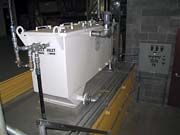
The need for pre-treatment of hazardous wastewater depends upon the classification of the waste and the intended disposal. An engineer must classify wastewater as follows:
1. Establish whether the wastewater is hazardous or non-hazardous.
2. Determine the nature of the waste and the best method for handling, treatment, storage and/or disposal.
3. Determine the nature of the waste to assess compatibility with other wastes.
4. Assess the potential environmental and/or public health aspects of the waste.
5. Evaluate whether the waste may be delisted from hazardous to non-hazardous.
The EPA has provided a mechanism for delisting hazardous waste. This process covers hazardous waste from non-specific sources. The generator of the waste must submit a formal petition to the EPA or other applicable state regulatory agency to receive such a delisting.
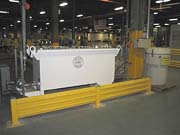
1. Hazardous waste from non-specific sources (e.g., halogenated solvents used in degreasing, and spent electroplating bath solutions).
2. Hazardous waste from specific sources (e.g., API separator sludge and tank bottoms from leaded petroleum refining).
3. Acutely hazardous waste from specific commercial chemical products, including discarded products, off-specification products and spill residuals.
4. Toxic hazardous wastes that are generated from commercial chemical products.
The initial list of hazardous waste was published in the Federal Register on May 19, 1980, and has been periodically amended since. The most recent list shall be used in the classification. Also, lists prepared by the applicable authorities should be used for the determination and review of materials not covered in the federal list.
If the source and nature of the hazardous waste is known, and the source material is not listed as hazardous, then a determination should be made as to whether the material exhibits hazardous waste characteristics, such as ignitability, corrosivity, reactivity and toxicity.
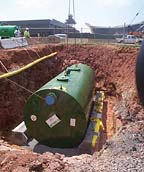
- Physical characteristics
- Permissible exposure limits in the air
- Toxicity in water
- Toxicology
- Safety precautions
- Disposal methods

The difficulty in designing a pre-treatment system is the flow characteristics of the hazardous waste. Many processes have a variable discharge level, similar to a normal domestic drainage system. The pre-treatment system must be capable of treating the hazardous waste at the high flow rate as well as the low flow rate.
Two of the most common products used in a pre-treatment process are interceptors and separators. Separators are available for the capture of all sizes of solids that may be in the waste stream. There are also separators that isolate heavy metals, as well as lighter substances such as oil.
More advanced systems have automatic controls and constant monitoring to evaluate the waste stream and determine the proper means of pre-treatment.
While not required, it is always recommended to isolate a process wastewater system from the domestic wastewater. When determining whether a process wastewater is hazardous, requiring pre-treatment, it is possible that samples will be taken to establish the level of hazard of the wastewater. If combined with the domestic wastewater, the sample may indicate a level of hazard, when no such level exists for the process waste. This often occurs when the urinal discharge increases the levels of ammonia in the waste stream. If a combined sample is analyzed, the process waste may be identified as requiring ammonia removal pre-treatment.
If the process wastewater is already identified as hazardous waste, the plumbing codes require the hazardous wastewater to be piped completely separate from the domestic wastewater. The two types of wastewater cannot be combined before the pre-treatment of the hazardous wastewater.
Another design feature that is recommended is the installation of sampling manholes downstream of the pre-treatment system and prior to combining with the domestic waste. This will allow grab samples to be taken of the pre-treated wastewater to establish that the discharge has been properly treated.
Since liquid hazardous waste will vary widely with respect to the type, concentration, source (site clean-up), volume and solids content, many treatment processes have application. Normally, multiple processes are used in combination for pre-treatment and/or final treatment. The four general approaches to liquid treatment are:
- On-site treatment system.
- On-site pre-treatment with discharge to existing wastewater treatment facility.
- On-site treatment with mobile unit that applies to site clean-up.
- On-site treatment by hauling the waste that is limited by volume. The most commonly used methods applied to waste treatment are:
- Activated carbon-A typical activated carbon system for hazardous waste will use granular activated carbon in a series of downflow reactor vessels.
- Air stripping-In an air stripping system, the contaminated waste stream is mixed with clean air, and the intimate contact causes a mass transfer that converts some of the contaminants into a gas. This is usually used prior to the use of activated carbon. This process usually releases volatile organics into the atmosphere,which requires that ambient air quality control be considered.
- Biological process-The biological process utilizes an aerobic biological treatment that is used for the removal of organic matter. Although most organic compounds are considered biodegradable, the practical treatment varies considerably. Proven process technology and microorganism adaptability offer a wide variety of treatment methods. This process generates a sludge that must be properly disposed of.
- Chemical precipitation-Chemical precipitation, either independently or in combination with the oxidation reduction reactions, along with sedimentation, are widely practiced for the removal of metals. Common precipitation reagents are lime, caustic and sulfide. Also sodium carbonate and calcium are used where solubility within a specific pH range is necessary for specific treatment methods. A test jar is used to select the specific method.
- Filtration-Filtration is a proven and reliable method to remove low levels of suspended solids. A significant consideration is the adequate treatment of filter backwash water, which will have high concentrations of contaminants.
- Gravity separation-Gravity separation is used as a part of the filtration process to remove high levels of suspended solids.
- Ion exchange-Ion exchange is a well-established method used for the removal of heavy metals and hazardous anions from dilute solutions. The mode of operation, whether manual or automatic, is an important decision.
- Neutralization-Neutralization is the only treatment required if the waste stream is determined to be corrosive.
- Oxidation reduction-Oxidation reduction reactions are used to reduce toxicity or to transform a substance to one or more easily handled materials.
- Reverse osmosis-Reverse osmosis, used to reduce the concentration of dissolved organics and inorganic solids, is limited in use. The resultant brine stream will require additional treatment. Also, additional precautions must be taken for the solutions used to wash and maintain the membrane.
- Sorption resins-Sorptive resins could be used to remove a wide range of polar and non-polar organics. A good application would be in response to a spill.
Failure to properly pre-treat hazardous wastewater can result in heavy fines from EPA and the local authorities. This is why it is very important for the engineer to do a thorough design of the pre-treatment system to assure full compliance with EPA requirements.
